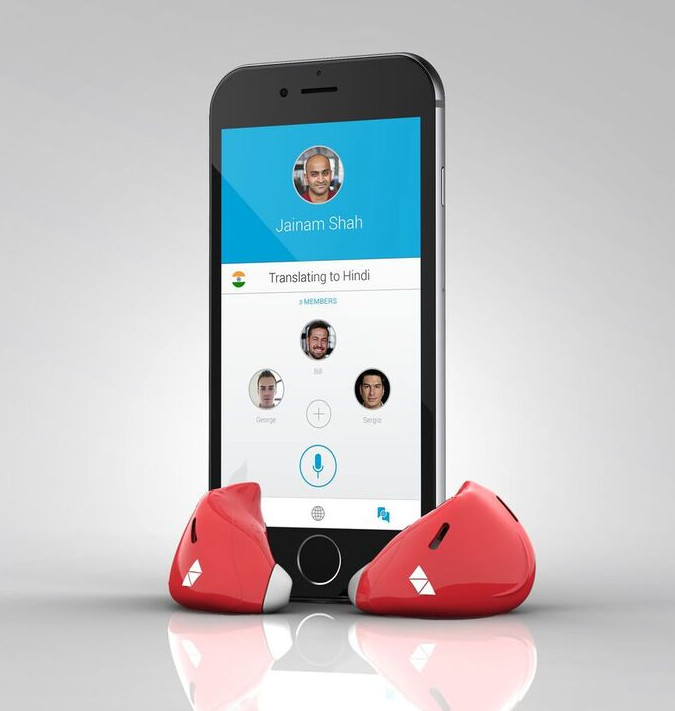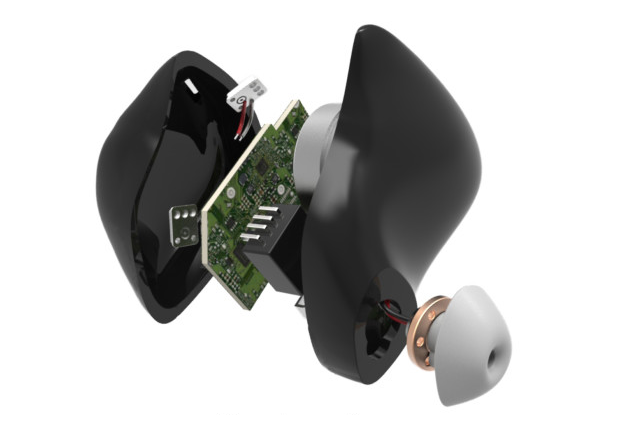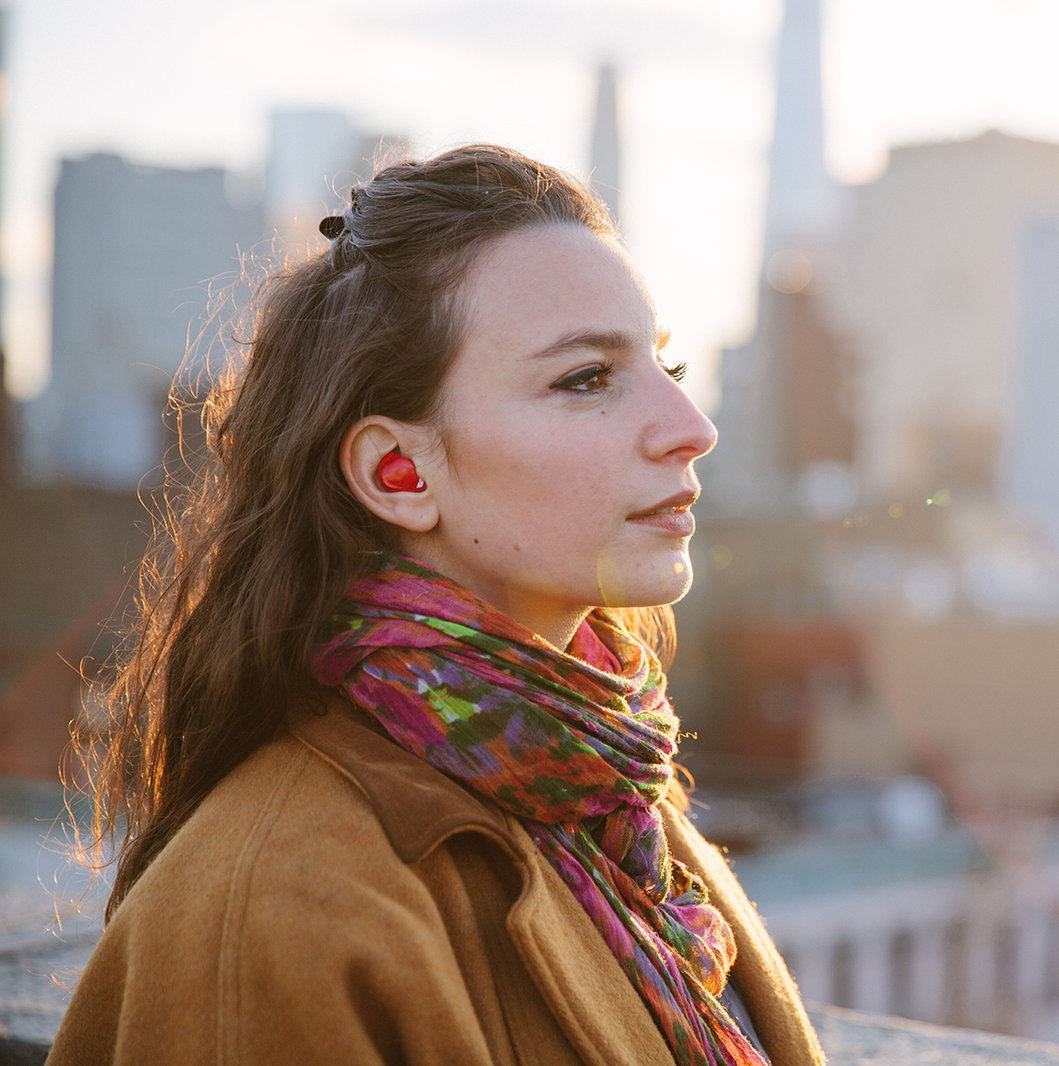Difference between revisions of "Pilot"
(a correction) |
(a correction) |
||
| Line 98: | Line 98: | ||
We are not aware of any policy that is regulating or is otherwise relevant to this device in particular. | We are not aware of any policy that is regulating or is otherwise relevant to this device in particular. | ||
| − | == Related Technologies, Projects or Scientific Research == | + | == Related Technologies, Projects, or Scientific Research == |
We found no related research that is connected to this device in particular. | We found no related research that is connected to this device in particular. | ||
Latest revision as of 14:22, 14 July 2017
| Pilot | |
|---|---|

|
|
| Category | Other Head-mounted Devices |
| Developer | Waverly Labs Inc. [1] |
| Announced | May 2016 [2] |
| Released | Developers: (unknown)
Consumers: May 2017 [2][3] |
| Price | 299 USD (June 2016)[4] |
| Operating system | none (requires smartphone) |
| Sensors |
microphone [3] |
| Weight | g (unknown) |
| Controls |
smartphone [5] |
| Data available | Limited |
| Risk factor | Low |
| Not Standalone | |
| http://www.waverlylabs.com/#features | |
Pilot is a wearable ear piece that offers nearly instantaneous translation to and from various languages. The ear pieces communicate with each other through the provided smartphone app and translates what the user is saying to a chosen foreign language which the other Pilot device plays to the user's communication partner. The device supports English, Spanish, French, Italian, and other latin and romance languages. Support for additional languages is planned after the release of the device.[4]
The device is still under development and it's release is planned on around May 2017. The company first plans to launch the smartphone app separately during the summer of 2016.[6]
Contents
Main Characteristics
The device is a plastic, wireless ear piece that sits just on the outside of the user's ear canal. The piece is equipped with a stereo speaker and two noise cancelling microphones. It has a Lithium-ion battery that lasts for up to 6 hours of operation.
To function, the device has to be paired to a smartphone with the provided app installed via Bluetooth. Then, a second Pilot ear piece has to be paired with the smartphone again. This allows two Pilot users to communicate with each other while the Pilot app translates their speech. By itself, the ear piece has no computing power on it's own and relies on the smartphone app to do the translation. This does not require constant Internet access as the translation is done offline on the phone.[4]
The company admits that it takes a few moments for the program to do the translation, but informs that they want to improve the time before the release. It also stated, that the machine translation is not perfect but the quality of it will improve the more people use the device.[3]
Please note that this information was taken from the company's IndieGoGo campaign and it is likely that the indicated hardware specifications will change before the actual release.
Purpose
The purpose of Pilot is to give it's users the ability to speak with someone whose language they do not speak. The device expands the ability to communicate across language boundaries, provided that both parties have the device.
Company & People
The device is developed by an American startup company Waverly Labs Inc.[1] The company is based in New York City and was established in 2013.[7]
- Andrew Ochoa - Founder and CEO[7]
- Jainam Shah - Director of Hardware and Operations
- Bill Goethals - Electrical Engineer, Manufacturing Design Expert
- Sergio Del Rio Diaz - Product Design
- George Konovalov - Software Engineer, Front End Developer
- Prashant Mathur - Machine Translation
- Jeremiah Warren - Creative Director
- Greyson MacAlpine - Visual Designer
The list of involved persons was taken from the IndieGoGo campaign page.[3]
Important Dates
- June 2014 - Concept and feasibility study
- April 2015 - Early software prototypes
- September 2015 - Full proof of concept
- March & April 2016 - Software and design prototypes
- May 2016 - IndieGoGo campaign started
- 25 June 2016 - IndieGoGo campaign fully funded
- December 2016 - Planned release of beta-test units
All dates were taken from the IndieGoGo campaign page.[3]
Enhancement/Therapy/Treatment
Enhancement - The device gives the user the ability to have their communication translated into a foreign language that they do not speak themselves.
Ethical & Health Issues
We are not aware of any ethical or health issues connected to this device in particular.
Public & Media Impact and Presentation
So far there are no reviews of the device as it has not been released yet. But there are several articles that are devoted to the device or to the IndieGoGo campaign. The following section summarises the opinion on the device found in these articles.
Each of the articles we analysed briefly describes the device, on one occasion[8] the available accessories are also mentioned.
Almost all articles compare the device to it's fictional equivalent, such as the Babel Fish from the Hitchiker's Guide to the Galaxy or the universal translator from the Star Trek franchise. Comparisons are made to existing equivalents as well, namely Microsoft Skype realtime translation or Google Translate.[9][10][11][12][13][14]
Some magazines tried to reach out to Waverly Labs to obtain more information on how exactly the translation will work, but were not successful.[11][12] Some noticed the surprising lack of Spanish language support being mentioned.[8]
Some authors expressed doubts about the real feasibility of the device and warned before blindly supporting the company's crowdfunding campaign.[14] Possible technical difficulties the startup may face were also expressed.[6]
Overall, no further assessment was given, although one author called the concept to be impressive.[15] Others have warned that the translation will not be perfect.[16]
Public Policy
We are not aware of any policy that is regulating or is otherwise relevant to this device in particular.
Related Technologies, Projects, or Scientific Research
We found no related research that is connected to this device in particular.
References
- ↑ 1.0 1.1 http://www.waverlylabs.com/contact/
- ↑ 2.0 2.1 http://www.digitaltrends.com/wearables/waverly-labs-pilot-language-translating-wearable-earpiece/
- ↑ 3.0 3.1 3.2 3.3 3.4 https://www.indiegogo.com/projects/meet-the-pilot-smart-earpiece-language-translator--2#/
- ↑ 4.0 4.1 4.2 http://www.waverlylabs.com/2016/05/faqs-about-early-bird-and-launch-date/
- ↑ http://www.sciencealert.com/these-new-earbuds-can-translate-languages-for-you-in-real-time
- ↑ 6.0 6.1 http://www.gizmag.com/waverly-labs-pilot-in-ear-translator-translation/43359/
- ↑ 7.0 7.1 https://www.linkedin.com/in/andrewochoa81
- ↑ 8.0 8.1 http://www.slashgear.com/waverly-labs-pilot-earpiece-translates-languages-on-the-fly-23441052/
- ↑ http://www.digitaltrends.com/wearables/waverly-labs-pilot-language-translating-wearable-earpiece/
- ↑ http://www.cnet.com/news/pilot-bluetooth-earpiece-crowdfunds-the-dream-of-universal-instant-language-translation/
- ↑ 11.0 11.1 http://thenextweb.com/gadgets/2016/05/17/pilot-translates-just-like-the-babel-fish/
- ↑ 12.0 12.1 http://mashable.com/2016/05/17/pilot-translate/#vF9aGqSYUZq7
- ↑ http://www.telegraph.co.uk/technology/2016/05/17/groundbreaking-gadget-claims-to-fit-in-your-ear-and-translate-fo/
- ↑ 14.0 14.1 http://www.wareable.com/hearables/pilot-waverly-labs-translation-earbud
- ↑ http://www.sciencealert.com/these-new-earbuds-can-translate-languages-for-you-in-real-time
- ↑ http://hypebeast.com/2016/5/waverly-labs-pilot-earpiece

